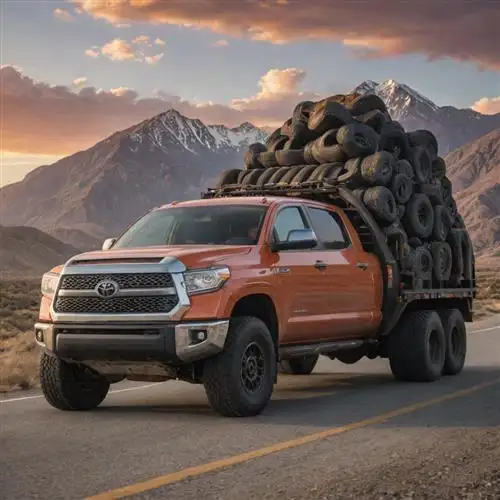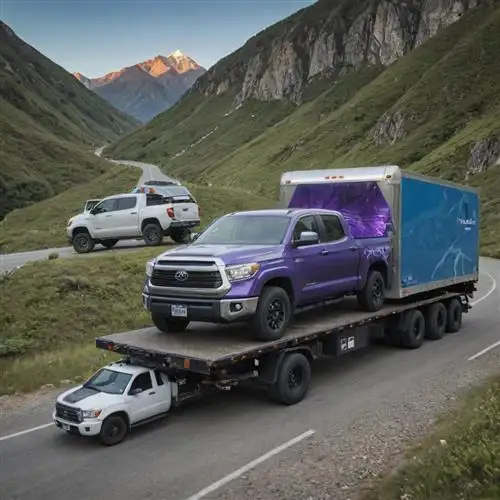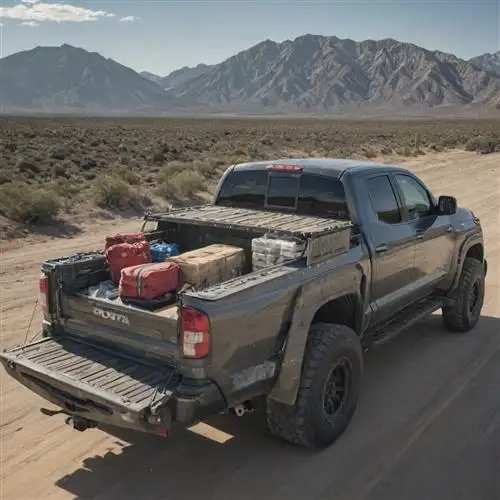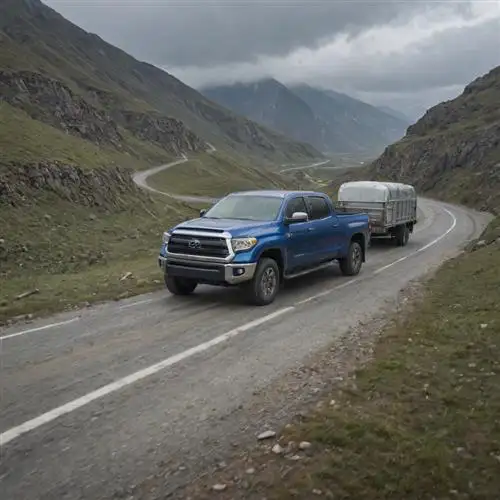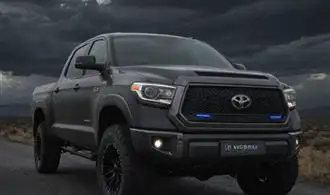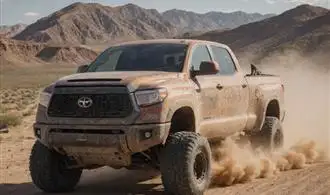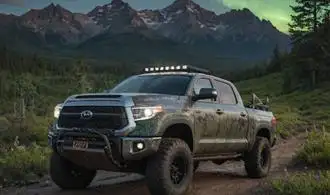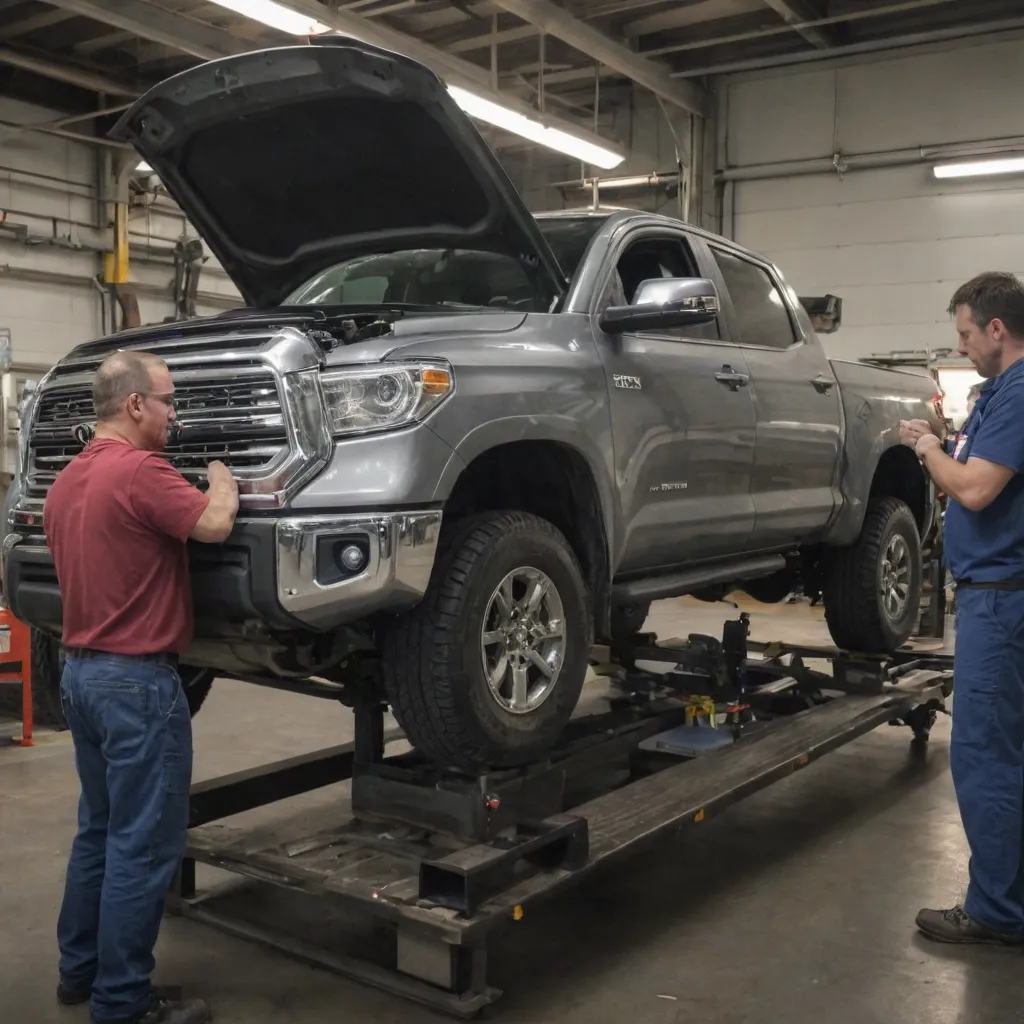
Understanding Towing Capacity
Towing capacity is a crucial factor for Toyota Tundra owners to consider when it comes to hauling heavy loads. This specification determines the maximum weight the Tundra can safely tow, which includes the trailer, cargo, and any additional passengers or cargo within the truck itself. Knowing your Tundra's towing capacity ensures you can transport heavy items without compromising the vehicle's performance, safety, or longevity.
- Gross Vehicle Weight Rating (GVWR): This is the maximum allowable weight of the fully loaded Tundra, including the vehicle, passengers, cargo, and the trailer. Exceeding the GVWR can lead to handling issues, increased wear and tear, and safety concerns.
- Gross Combination Weight Rating (GCWR): The GCWR is the maximum allowable weight of the Tundra, the trailer, and their combined cargo. This rating is crucial when towing heavy loads to ensure you don't exceed the Tundra's capabilities.
- Engine and Drivetrain: The Tundra's engine size, transmission, and drivetrain configuration can impact its towing capacity. Larger engines and more robust drivetrain components generally allow for higher towing limits.
- Axle Ratio: The Tundra's axle ratio, which determines the relationship between the engine's revolutions and the wheels' revolutions, can also influence towing capacity. Higher axle ratios are typically better suited for towing heavy loads.
- Understand your Tundra's specific towing capacity, which can be found in the owner's manual or on a placard inside the driver's side door jamb.
- Ensure the trailer and its cargo do not exceed the Tundra's rated towing capacity, GVWR, or GCWR.
- Consider upgrading to a Tundra model with a higher towing capacity if you frequently tow heavy loads.
- Properly distribute the weight of the trailer and its cargo to maintain the appropriate tongue weight and ensure the Tundra's handling and stability are not compromised.
- Equip your Tundra with the necessary towing accessories, such as a hitch, trailer brakes, and sway control systems, to enhance safety and stability while towing.
Choosing the Right Hitch and Trailer
Choosing the Right Hitch and Trailer for Your Toyota Tundra is a crucial aspect of towing. The right hitch and trailer not only ensure a safe and secure towing experience but also maximize the Tundra's towing capacity. When selecting a hitch, consider the Tundra's towing capacity, the weight of the trailer, and the type of trailer you plan to haul. A weight-distributing hitch is often recommended for heavier trailers, as it helps distribute the weight evenly between the Tundra and the trailer, improving handling and stability.
The Tundra's towing capacity is an essential factor to consider when choosing a hitch. Consult your owner's manual or the manufacturer's specifications to determine the maximum towing capacity for your specific Tundra model. This information will guide you in selecting a hitch that can safely handle the weight of your trailer. It's important to never exceed the Tundra's towing capacity, as it can compromise the vehicle's handling, safety, and performance.
In addition to the Tundra's towing capacity, the weight of the trailer is another critical consideration. Weigh the fully loaded trailer, including any cargo or equipment, and choose a hitch that can accommodate the trailer's weight. A trailer that is too heavy for the Tundra's hitch can cause instability, poor handling, and even potential damage to the vehicle.
The type of trailer you plan to haul also plays a role in selecting the right hitch. Different hitch types are designed for specific trailer configurations, such as ball hitches for standard trailers, gooseneck hitches for fifth-wheel trailers, and pintle hitches for specialized trailers. Ensure that the hitch you choose is compatible with the trailer you intend to use.
When it comes to the trailer itself, consider factors such as the trailer's size, weight, and intended use. A well-designed trailer with the appropriate weight rating, brakes, and safety features can enhance the towing experience and improve the overall safety of your journey. Some key features to look for in a trailer include sturdy construction, reliable brakes, and proper lighting and signaling systems.
Load Distribution and Weight Balance
Proper load distribution and weight balance are crucial considerations for Toyota Tundra owners when towing. Uneven weight distribution can lead to poor handling, increased risk of sway, and potential safety hazards. To ensure a safe and stable towing experience, it's essential to understand the principles of load distribution and weight balance.
The key to effective load distribution is to position the heaviest items as close to the axle as possible, with the bulk of the weight centered over the Tundra's rear axle. This helps maintain the correct tongue weight, which typically ranges from 10% to 15% of the total trailer weight. Placing too much weight at the front or rear of the trailer can cause the Tundra to become unstable, leading to fishtailing or other handling issues.
When loading the trailer, it's important to consider the placement of items carefully. Heavier objects should be positioned low and centered, with lighter items stacked on top. This helps keep the center of gravity low, improving the Tundra's stability and handling. Evenly distributing the weight across the trailer's width is also recommended to prevent side-to-side imbalances.
In addition to the load distribution, the overall weight of the trailer and its contents must be carefully monitored. The Tundra's maximum towing capacity, as specified by the manufacturer, should never be exceeded. Exceeding this limit can lead to poor braking performance, increased wear on the vehicle's components, and potentially dangerous driving conditions.
It's essential to weigh the fully loaded trailer, including the contents, to ensure the total weight does not exceed the Tundra's towing capacity. This can be done at a commercial scale or by using a portable trailer scale. Regularly checking the weight distribution and making adjustments as needed can help maintain safe and stable towing conditions.
Towing Safety Practices
Towing safety is paramount for Toyota Tundra owners who frequently haul heavy loads. When it comes to towing, safety should always be the top priority. Proper preparation, equipment selection, and attentive driving are essential to ensure a safe and successful towing experience. Let's delve into some crucial towing safety practices every Tundra owner should know.
Firstly, it's vital to understand the towing capacity of your Tundra. Exceeding the recommended towing capacity can compromise the vehicle's handling, braking, and overall stability, putting you and others on the road at risk. Carefully review your Tundra's owner's manual and consult with a trusted dealer to determine the maximum towing weight your vehicle can safely handle.
Proper trailer selection and maintenance are also crucial for towing safety. Ensure that your trailer is compatible with your Tundra, and that it is in good working condition, with functioning lights, brakes, and secure attachment points. Regular inspection and maintenance of your trailer's components can help prevent unexpected issues during towing.
Equally important is the proper loading and distribution of the cargo within the trailer. Balanced weight distribution is key to maintaining control and stability while towing. Placing heavier items towards the front of the trailer, near the Tundra's hitch, can help improve the vehicle's handling and stability.
Driving with a trailer requires increased awareness and cautious maneuvers. Increase your following distance, allow for longer braking distances, and be mindful of your Tundra's wider turning radius. Avoid sudden lane changes or abrupt braking, as these can lead to trailer sway and potentially hazardous situations.
Finally, ensure that your Tundra is equipped with the necessary towing accessories, such as a hitch, safety chains, and brake controller. These components play a crucial role in securing the trailer and maintaining control during towing. Regularly inspect and maintain these accessories to ensure their proper functioning.
Maintenance and Inspection
Ensuring your Toyota Tundra is well-maintained and regularly inspected is crucial for its optimal performance and longevity. Regular maintenance not only keeps your truck in top shape but also helps prevent costly breakdowns and extends the lifespan of critical components. As a Tundra owner, you should be diligent in following the manufacturer's recommended maintenance schedule, which typically includes oil changes, tire rotations, brake inspections, and fluid flushes at specific mileage intervals.
Oil changes are one of the most fundamental maintenance tasks for your Tundra. It's recommended to use the manufacturer-specified oil type and change it at the intervals recommended in your owner's manual. Neglecting oil changes can lead to increased wear and tear on the engine, which can ultimately result in costly repairs. Additionally, be sure to inspect the oil level regularly and top it off as needed to ensure the engine is properly lubricated.
Maintaining the proper tire pressure and rotation is another important aspect of Tundra maintenance. Underinflated or unevenly worn tires can negatively impact fuel efficiency, handling, and even safety. Follow the recommended tire pressure values listed on the driver's side door jamb sticker, and rotate your tires at the interval specified in your owner's manual to ensure even wear.
Brakes are a critical safety system, and regular inspection and maintenance are essential. Have your Tundra's brake pads, rotors, and calipers checked by a qualified technician at the recommended intervals. If any components show signs of wear or damage, they should be replaced promptly to ensure reliable braking performance.
Fluid flushes, such as the transmission fluid, power steering fluid, and coolant, should also be performed at the intervals specified by the manufacturer. These fluids play a crucial role in the proper functioning of your Tundra's various systems, and neglecting to maintain them can lead to costly repairs down the line.
In addition to the scheduled maintenance tasks, it's important to regularly inspect your Tundra for any signs of wear, damage, or potential issues. This includes a visual inspection of the exterior, checking for any fluid leaks, and examining the condition of hoses, belts, and other components. Addressing any issues promptly can help prevent more significant problems from developing.

